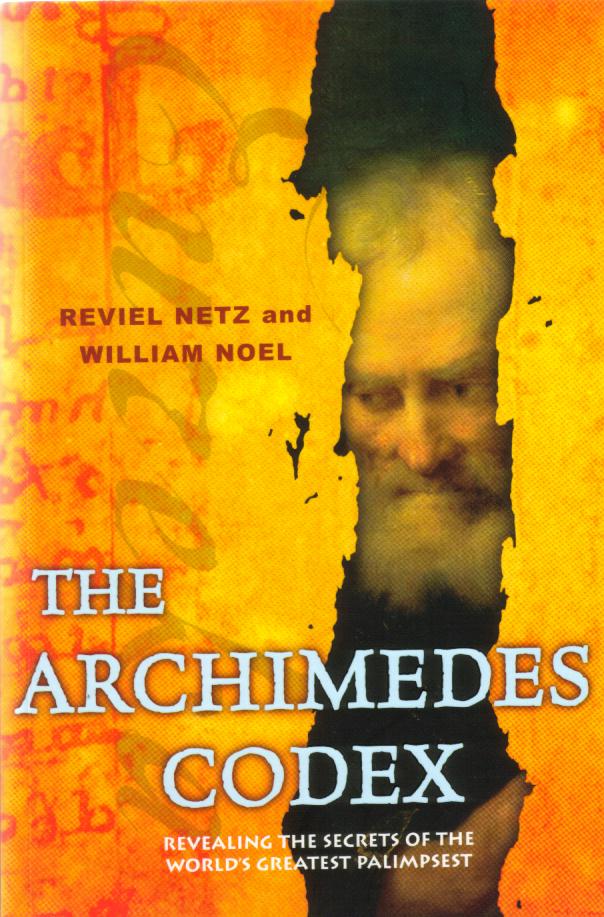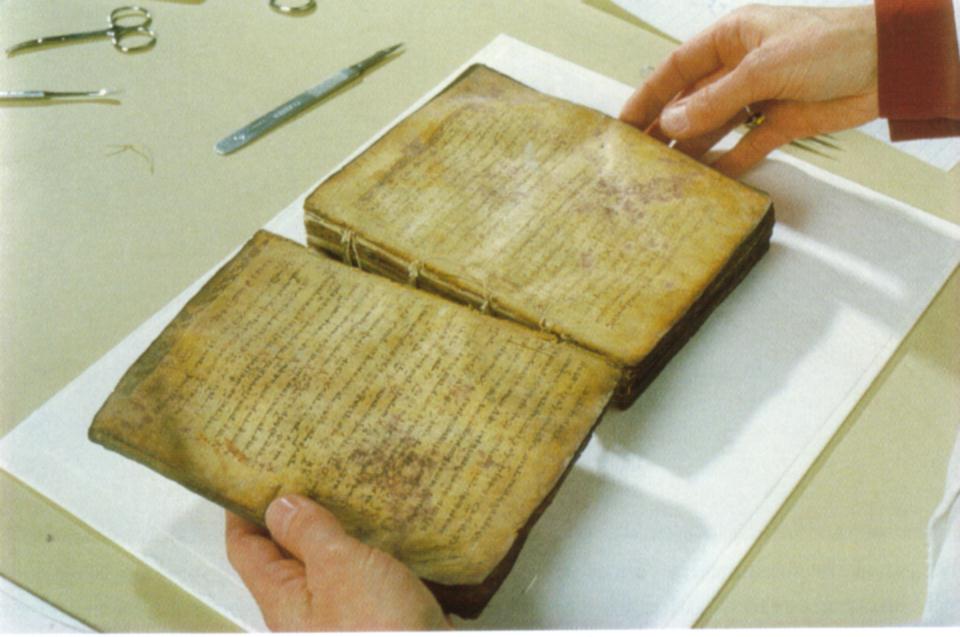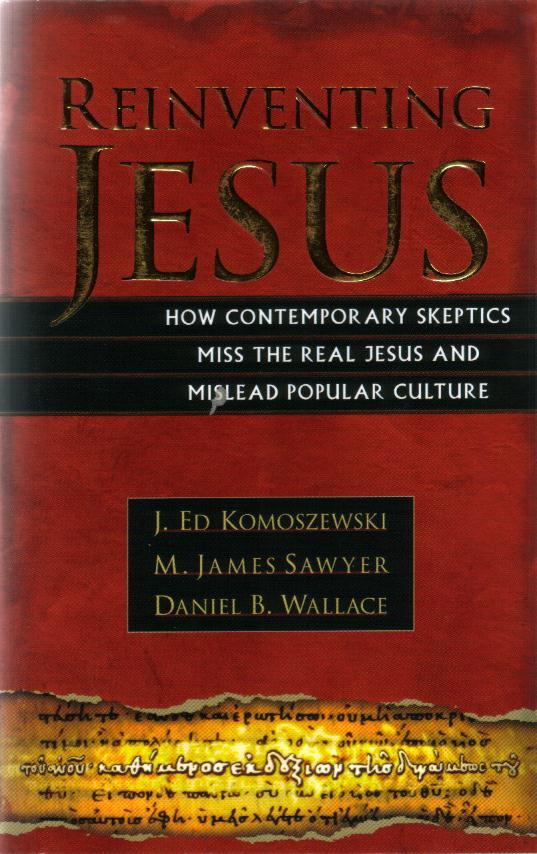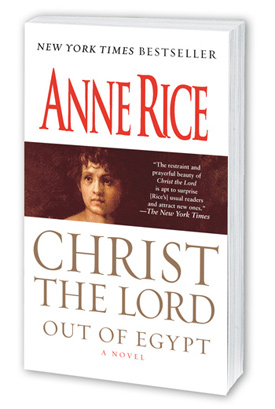2007 Christian Apocrypha Workshop Canceled
The CA Workshop previously discussed HERE has been canceled. The reason is purely financial: SSHRC decided not to fund the event.
Apocryphicity
A Blog Devoted to the Study of Christian Apocrypha

The CA Workshop previously discussed HERE has been canceled. The reason is purely financial: SSHRC decided not to fund the event.
The Annual Meeting of the Society of Biblical Literature is fast approaching (Nov. 17-20). The Program has been posted on-line and several bloggers have been drawing attention to particular sessions (see The Forbidden Gospels on the Gospel of Judas papers). Here are the complete details of the Apocrypha sessions:
…November 19, 1-3 pm
Christopher Matthews, Weston Jesuit School of Theology, Presiding Antti Marjanen, University of Helsinki
Does the Gospel of Judas Rehabilitate Judas Iscariot? (25 min)
Discussion (5 min)
Edward Dixon, Emory University
A Hope for Status Inversion in the Acts of Thomas (25 min)
Discussion (5 min)
Derek S. Dodson, Baylor University
Dream Magic: The Dream of Pilate’s Wife and the Accusation of Magic in the Acts of Pilate (25 min)
Discussion (5 min)
Jennifer A. Glancy, Le Moyne College
Mary in Childbirth (25 min)
Discussion (5 min)
Paul G. Schneider, University of South Florida
A Johannine Trajectory for the Lord's Secret Sacrament (25 min)
Discussion (5 min)November 19, 4-6:30 pm
Abraham Terian, St. Nersess' Armenian Seminary The Armenian Gospel of the Infancy (25 min)
Discussion (5 min)
Claire Clivaz, University of Lausanne
Madness, Philosophical, or Mystical Experiment? A Weird Text, Recognitions 2:61-69 (25 min)
Discussion (5 min)
Päivi Vähäkangas, University of Helsinki
The Doctrine of Creatio ex Nihilo in Pseudo-Clementine Literature (25 min)
Discussion (5 min)
Caleb Webster, Claremont Graduate University
Taking Over Thomas: The Subversion of Judas Didymus Thomas in the Edessene Abgar Tradition (25 min)
Discussion (5 min)
Business Meeting (30 min)November 20, 9-11:30
While we're on the topic of technology and manuscripts, take a look at this video currently making the rounds on the internet (sorry, I don't know how to embed the video in this post). It is a skit from a Norwegian TV show.
 Recently I finished reading Reviel Netz’s and William Noel’s The Archimedes Codex: Revealing the Secrets of the World’s Greatest Palimpsest. The book details the acquisition of a thirteenth-century Christian prayer book that contains, as its underwriting, several works by the third-century BCE Greek mathematician Archimedes. One of these works, Floating Bodies, is found in no other source. But in some places the underwriting is incredibly difficult to read. The Archimedes Codex describes the pioneering scientific efforts to recover Archimedes’ works.
Recently I finished reading Reviel Netz’s and William Noel’s The Archimedes Codex: Revealing the Secrets of the World’s Greatest Palimpsest. The book details the acquisition of a thirteenth-century Christian prayer book that contains, as its underwriting, several works by the third-century BCE Greek mathematician Archimedes. One of these works, Floating Bodies, is found in no other source. But in some places the underwriting is incredibly difficult to read. The Archimedes Codex describes the pioneering scientific efforts to recover Archimedes’ works.
The book led me to thinking about palimpsests of CA texts and the possibility that advances in reading palimpsests could aid in recovering our texts. I am aware only of one such palimpsest: Vindobonensis 563, an eighth-century manuscript written over a fifth-century collection of the Gospel of Nicodemus, the Infancy Gospel of Thomas, and selections from the Gospel of Matthew. Constantin von Tischendorf was the first scholar to see the manuscript and was able to decipher much of it; Guy Philippart (“Fragments palimpsestes latins du Vindobonensis 563 [Ve siècle?]: Évangile selon S. Matthieu, Évangile de Nicodème, Évangile de l’enfance selon Thomas”, AnBoll 90, p. 391-411) revealed more of it in 1972.
 The manuscript is important for the study of Infancy Thomas as it is the earliest known source we have for the text; unfortunately, only a handful of pages from the original manuscript were used by the eighth-century recycler. Virtually all of this material is readable (save for a few lines on two folios). …
The manuscript is important for the study of Infancy Thomas as it is the earliest known source we have for the text; unfortunately, only a handful of pages from the original manuscript were used by the eighth-century recycler. Virtually all of this material is readable (save for a few lines on two folios). …
Several weeks ago I posted the first five of ten concerns I have about the treatment of Christian Apocrypha in recent apologetic books, books principally aimed at combating the popularity of The Da Vinci Code. Happily, that first post led to some discussion here and on April DeConick’s Forbidden Gospels blog. Hopefully, this second post will elicit more discussion. Note that I have added a few citations from the apologetic writers as examples of the phenomena—these are not meant to be exhaustive.
6. All Christian Apocrypha scholars are created equal. The apologists’ main opponents are the so-called “new school” or Harvard school featuring the likes of Elaine Pagels, Helmut Koester, and Bart Ehrman (Bock, Missing Gospels, uses this term to great effect). The tendency, though, is to characterize them as a unit, as if all of them were in agreement on every CA text. Certainly their approach is similar—i.e., they are all sympathetic to the texts and their authors/communities—but not all of them agree on such issues as the dating and origins of the literature (e.g., Ehrman disagrees with other “liberal” scholars on the dating of the Gospel of Peter). In addition, there are numerous other scholars of this literature, rarely cited, who are not as radical as the “new school” in their dating of the texts. To characterize all CA scholarship by its most radical works misrepresents the field.
7. Neglect of the “orthodox apocrypha.” The apologists focus their energy primarily on the gospels that are …
North Shore Pictures Entertainment, a production company based in Hollywood has optioned Peter Kahalani's screenplay, "The Halo Effect." The script covers the missing years of 12-30, before Christ begins his ministry.
The film has intrigue, murder, plot twists, deception, a new world order, the discovery of hidden manuscripts and an unlikely hero that shows the world that Satan has been in control for many thousands of years masquerading under one of the worlds top formable religions.
"The film never points a finger at any given religion but points to a way to a higher consciousness and a discovery not seen by many of the worlds population," says Kahalani. It is slated for production to begin in May of 2008 in Asia and released worldwide Christmas 2008.
But there is another option. According to an article in the International Herald Tribune, St. Louis University has copies of “nearly half of the medieval and Renaissance manuscripts” from the Vatican archives. The University has been stockpiling the material (on microfilm) since the 1950s; the collection even includes a copy of the Codex Vaticanus. I wonder: perhaps a microfilm order from SLU would arrive far quicker than from the Vatican.
First, Timothy Paul Jones points out a typographical error. I wrote: “First, even if we grant that full-blown Gnostic Christianity is a late second century phenomenon (well, mid-first century really if we include Valentinus and Marcion)” but should have written “well, mid-second century…”). Oops.
Bryan L. asked for my opinion on why the non-canonical gospels fell out of use. Was there a concerted effort to suppress the texts? It would seem so from reading the canon lists and Athaniasius’ 39th Festal Letter. But such limitations on the canon can only be enforced in areas where the Western church had power and influence. As that power and influence grew, the Western canon became enforced. That said I agree that certain texts seem to have been more popular in certain areas and this popularity would have a natural effect on shaping the canon (though were they popular because the people liked them or because their preachers/bishops, etc. liked them and chose to read no other texts?). Gnostic texts, of course, had a limited audience (average readers/listeners would find them hard to understand and the texts’ views on asceticism unattractive).
Peter Head wrote: “For me most of these are only problematic when absolutised and generalised. Try using ’some’ for 1 …
1. All non-canonical texts are Gnostic. Since when was the Gospel of Peter a Gnostic text? What about the Infancy Gospel of Thomas? Such identifications belong in scholarship of the nineteenth-century (when we knew less about Gnosticism) not the twenty-first century. Either the modern apologists know nothing of recent scholarship on the texts (which is likely) or they intentionally call all non-canonical texts Gnostic in order to heap scorn upon them (which is also likely)—i.e., Gnosticism is bad, all non-canonical texts are Gnostic; therefore, all non-canonical texts are bad.
2. Canonical texts are early compositions and non-canonical texts are late. The late dating of non-canonical texts is due to two factors: because Gnosticism is a late second-century phenomenon, and because the physical evidence for Gnostic texts is no earlier …
My introduction to the Christian Apocrypha, as for many people, came in undergraduate Bible classes. I was raised as a Catholic (albeit with a small “c”) and was surprised to learn of the existence of this literature; I felt I had been misled or intentionally misinformed by the church. This was also a time in my life when I was intensely interested in journalism and its attendant passion for intellectual freedoms. The church’s obfuscation of the CA seemed to me yet another example of censorship. As my interest in journalism waned and my interest in biblical studies waxed, I turned my attention to learning more about the CA and, eventually, to bring awareness to it.
Now a seasoned (well, lightly-seasoned) professor, I have left my initial bitterness about the church (and my faith in toto) behind. I remain interested in the literature, but only as a window into the variety of Christian thought and literary expression in antiquity. I believe the CA are essential for understanding the development and growth of Christianity, including how Christian thought has penetrated into the arts (e.g., the influence of …
 Though the furor over The Da Vinci Code has died down, books refuting its claims about the Christian Apocrypha continue to be published. One of the most recent of these is Reinventing Jesus: How Contemporary Skeptics Miss the Real Jesus and Mislead Popular Culture (Grand Rapids, Mich.: Kregel Publications, 2006) by J. Ed Komoszewski, M. James Sawyer, and Daniel B. Wallace. Like its ilk, Reinventing Jesus is apologetic—i.e., it is aimed specifically at defending Christianity from its critics—and therefore allows evidence to take a back seat to the promotion of orthodoxy. I’ve read enough of these books now that the arguments no longer surprise me. I am frustrated, however, by the authors’ lack of knowledge about the CA texts and the scholarship at which they take aim.
Though the furor over The Da Vinci Code has died down, books refuting its claims about the Christian Apocrypha continue to be published. One of the most recent of these is Reinventing Jesus: How Contemporary Skeptics Miss the Real Jesus and Mislead Popular Culture (Grand Rapids, Mich.: Kregel Publications, 2006) by J. Ed Komoszewski, M. James Sawyer, and Daniel B. Wallace. Like its ilk, Reinventing Jesus is apologetic—i.e., it is aimed specifically at defending Christianity from its critics—and therefore allows evidence to take a back seat to the promotion of orthodoxy. I’ve read enough of these books now that the arguments no longer surprise me. I am frustrated, however, by the authors’ lack of knowledge about the CA texts and the scholarship at which they take aim.Komoszewski et al focus their apologetic against the usual suspects: the Jesus Seminar, The Da Vinci Code, and anti-historical Jesus works such as Tom Harpur’s The Pagan Christ. They see the works of these writers feeding a “radical skepticism” (p. 15) rampant in North America: “The media’s assault on the biblical Jesus, postmodernism’s laissez-faire attitude toward truth, and America’s collective ignorance of Scripture have joined to create a culture of cynicism. In short, society has been conditioned to doubt” (p. 16). Their book seeks to redress this by “build[ing] a positive argument for the historical validity of Christianity” (p. 17). They do so by asking (and answering) a number of questions: did the gospel writers get the story right? were the …
 In Fall 2008 moviegoers will be able to see a film adaptation of Anne Rice’s Christ the Lord: Out of Egypt (read the press release HERE). I read the book soon after its release and made some notes on its use of Christian Apocrypha. This is as good a time as any to share those notes.
In Fall 2008 moviegoers will be able to see a film adaptation of Anne Rice’s Christ the Lord: Out of Egypt (read the press release HERE). I read the book soon after its release and made some notes on its use of Christian Apocrypha. This is as good a time as any to share those notes. The book tells the story of the Holy Family’s return from Egypt to their hometown of Nazareth. The story is told from Jesus’ perspective, but as an adult reflecting on his childhood. It opens with a seven-year-old Jesus in Alexandria, surrounded by his family, which includes Mary and her brother Cleopas, Joseph and his brothers Alphaeus and Simon, Jesus’ aunts Salome, Esther and Mary, Jesus’ cousins Little Joses, Judas, Little Symeon and Salome, and big brother James, the child of Joseph from a previous marriage (recalling the explanation for the brothers of Jesus given in the Protoevangelium of James).
Joseph and his brothers are employed in Egypt as carpenters. After Joseph completes a project for Philo, the famous teacher meets Jesus, who he calls “the most promising scholar he has ever seen” (p. 14). But things go wrong for the family when Jesus curses a boy, Eleazer, in the marketplace. The miracle echoes Infancy Thomas ch. 4, though in the gospel Jesus is five, not seven, and in Nazareth, not Egypt. Infancy Thomas is employed again when James recalls having seen Jesus make birds from clay on the Sabbath (Infancy Thomas…